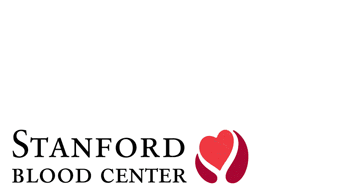About Blood Donation / FAQs
December 8, 2011 at 1:27 pm
Published by Stanford Blood Center

By Melissa Ramos, volunteer guest-blogger for Stanford Blood Center
Staying healthy through this season can be especially challenging. It seems that all around you, people have the sniffles or a cough. Taking good care of yourself is key to preventing the flu. Here are a few tips to help keep yourself strong and healthy this year.
November 16, 2011 at 2:36 pm
Published by Stanford Blood Center
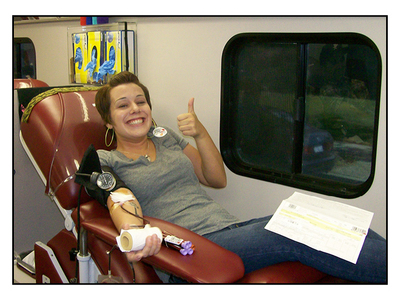
By Julie Ruel, Social Media Manager, Stanford Blood Center
Visiting a mobile blood drive is a convenient way for busy parents, students, and professionals to keep up with their routine of donating blood without having to travel too far. We come to you so you don't have to come to us! Accounting for about 55% of the total amount of blood we collect, our drives are hosted at college campuses, high schools, churches, and hundreds of companies in the Valley and up the Peninsula.
October 28, 2011 at 10:14 am
Published by Stanford Blood Center

By Julie Ruel, Social Media Manager, Stanford Blood Center
Each day, the recruitment team at Stanford Blood Center (SBC) works hard to help ensure we have blood products available to those in need. "We do this by connecting with donors and inviting them to return. It sounds simple enough, but the reality is that this mission takes time, strategy, and creativity," explains Karen Paganelli, recruitment manager at SBC. The hospitals' needs fluctuate from day to day and we must constantly keep on top of our inventory to make sure the right type is available at the right time for the right patient.
September 30, 2011 at 8:00 am
Published by Stanford Blood Center
By Julie Ruel, Social Media Manager, Stanford Blood Center
About every two seconds somebody in the U.S. needs blood. An estimated 38% of the population is eligible to give blood at any given time but less than 10% actually do. So blood centers must work hard to keep a constant supply on their shelves and ready to go. And as you know, we all rely on the support of generous volunteer donors. At Stanford Blood Center (SBC) specifically, we provide blood only to local hospitals and depend on the busy Bay Area folks (of which just 3% are active blood donors) to keep our inventory healthy.
September 14, 2011 at 4:15 pm
Published by Stanford Blood Center
By Amanda Baker, Communications Intern, Stanford Blood Center
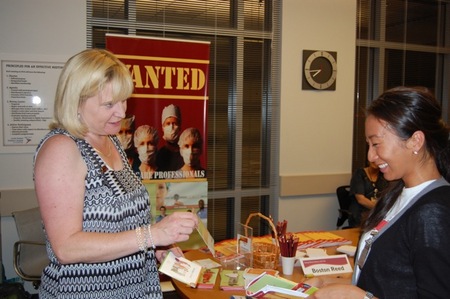
On Tuesday, Stanford Blood Center (SBC) hosted an encore of the Giving Blood Works promotion at our Hillview Center. This event brought together donors, recruiters, and career counselors for an evening including a networking techniques seminar, a chance to meet with recruiters from local companies, and an opportunity to sign up for half-hour resume critiques with career experts Lisa Stotlar and Ellen Shulman from CareerGenerations.
August 25, 2011 at 10:23 am
Published by Stanford Blood Center
By Julie Ruel, Social Media Manager, Stanford Blood Center
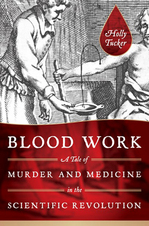
Medicine and murder were two words I did not expect to see together in the title of an NPR talk on the history of blood transfusions. Holly Tucker, a professor at Vanderbilt University in Nashville, was going about her usual business as she researched information for a class lecture on the discovery of blood circulation by an English physician in the 1620s. What she uncovered, purely by accident, led to her book about the history of blood transfusions, "Blood Work: A Tale of Medicine and Murder in the Scientific Revolution".
August 19, 2011 at 8:54 am
Published by Stanford Blood Center
By John Williams, Marketing Manager, Stanford Blood Center
In 2009, during the height of the recession, Stanford Blood Center ran a promotion in which blood donors who donated during a two-week period were invited back to a career networking workshop, resume clinic, and job fair. The event, called "Giving Blood Works," was a hit with job-seekers and a win-win for the unemployed and the recipients of the life-saving blood products. And let's not overlook the benefit to the employers. After all, we like to think that someone who is willing to donate blood to help save a life must be a good job candidate!
August 10, 2011 at 10:05 am
Published by Stanford Blood Center
By John Williams, Marketing Manager, Stanford Blood Center
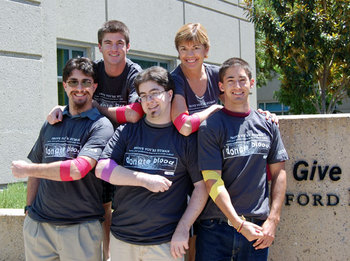
It's heartwarming when, in this time of technology-based connectivity, you see a family doing things together. In this case, Mary Sullivan and her sons Tom, Dan, Greg and Steve donated blood for the community as a family. Ironically, it was a technology-based promotion that drove this wonderful group into Stanford Blood Center that day.
July 28, 2011 at 11:01 am
Published by Stanford Blood Center
By Julie Ruel, Social Media Manager, Stanford Blood Center
At Stanford Blood Center we collect several different types of blood products from our volunteer donors. All products have different functions pre- and post-donation. In other words, before and after they leave your body, they each serve different purposes. For the scope of this article, I'll focus on red blood cells (RBCs) collected during a whole blood donation and platelets collected during an ABC donation. These are the two most common products we draw, accounting for about 99% of our total donations in a year.
July 6, 2011 at 2:26 pm
Published by Stanford Blood Center
By Julie Ruel, Social Media Manager, Stanford Blood Center

Cytomegalovirus (CMV) is not an unfamiliar term in the blood banking world. A member of the herpes family, it is one of the many tests we perform on each unit of donated blood. For healthy individuals, having the virus, or what we refer to as being CMV positive, isn't harmful. And if healthy, unless you've specifically been tested for CMV, you most likely don't know whether you have the antibody to it or not. However, for infants or those with impaired immune systems, it can be deadly. Because of this, Stanford Blood Center routinely tests for it and was in fact, the first blood center in the world to provide CMV negative blood to hospitals for immunocompromised transfusion recipients.

